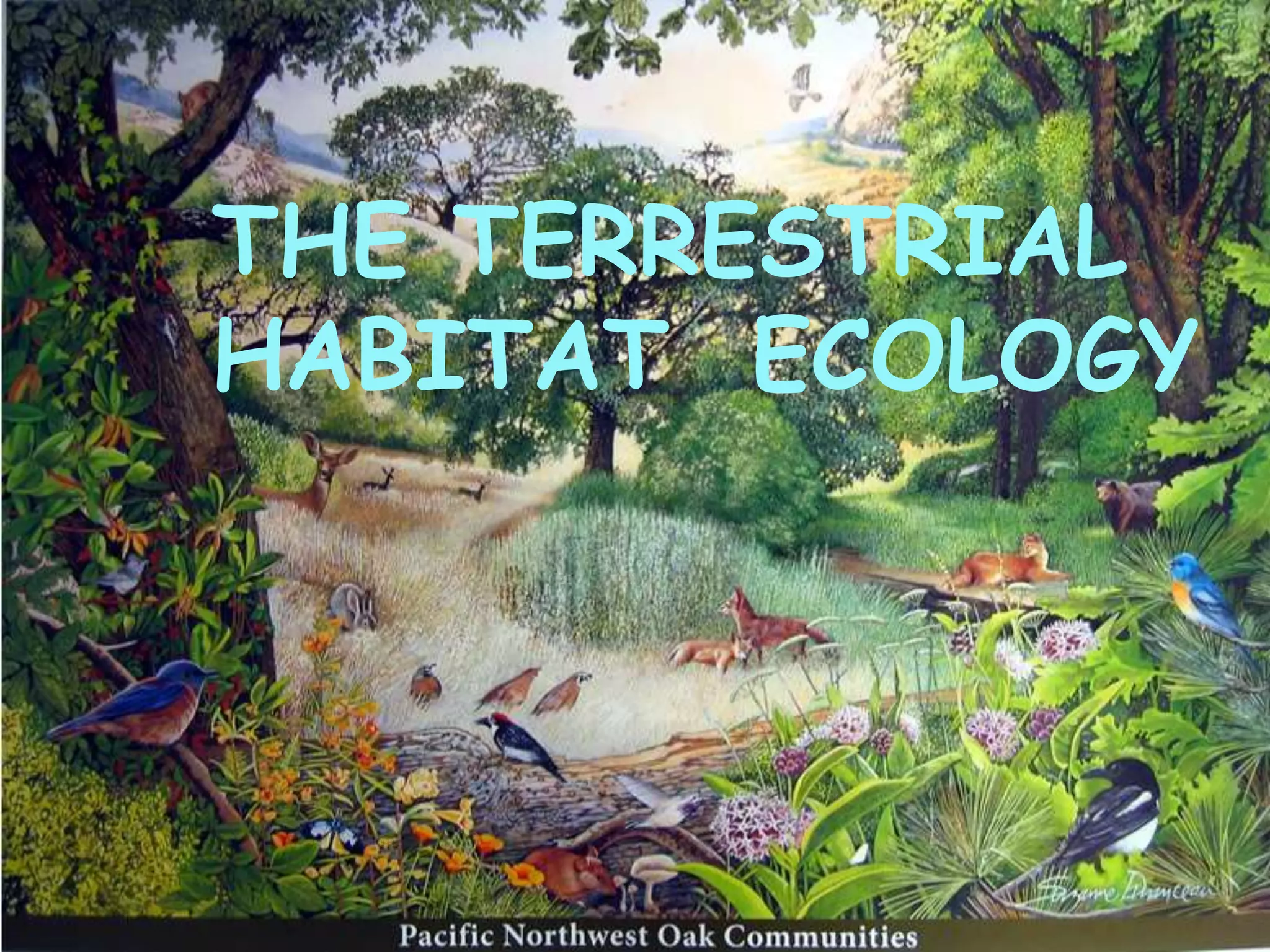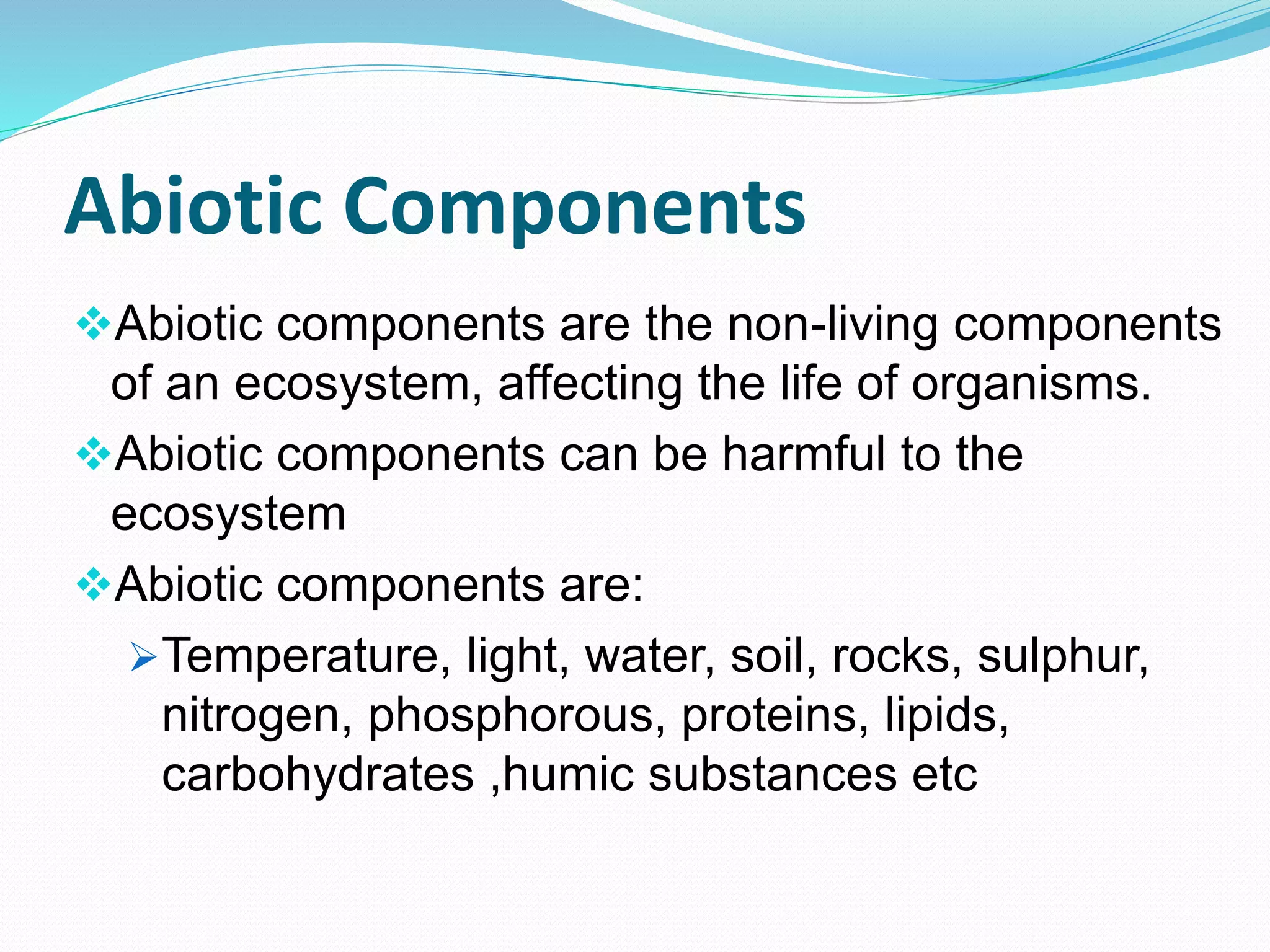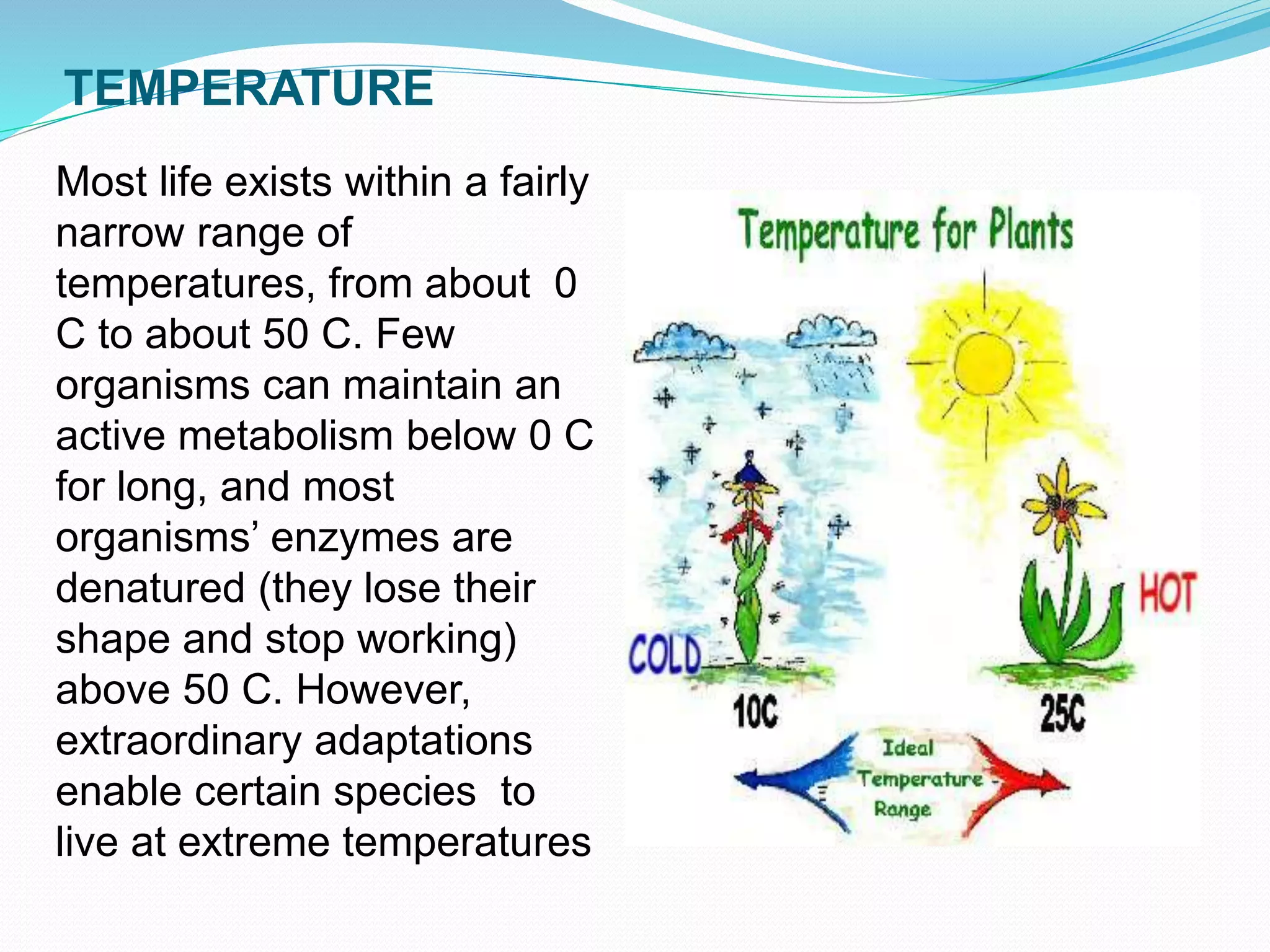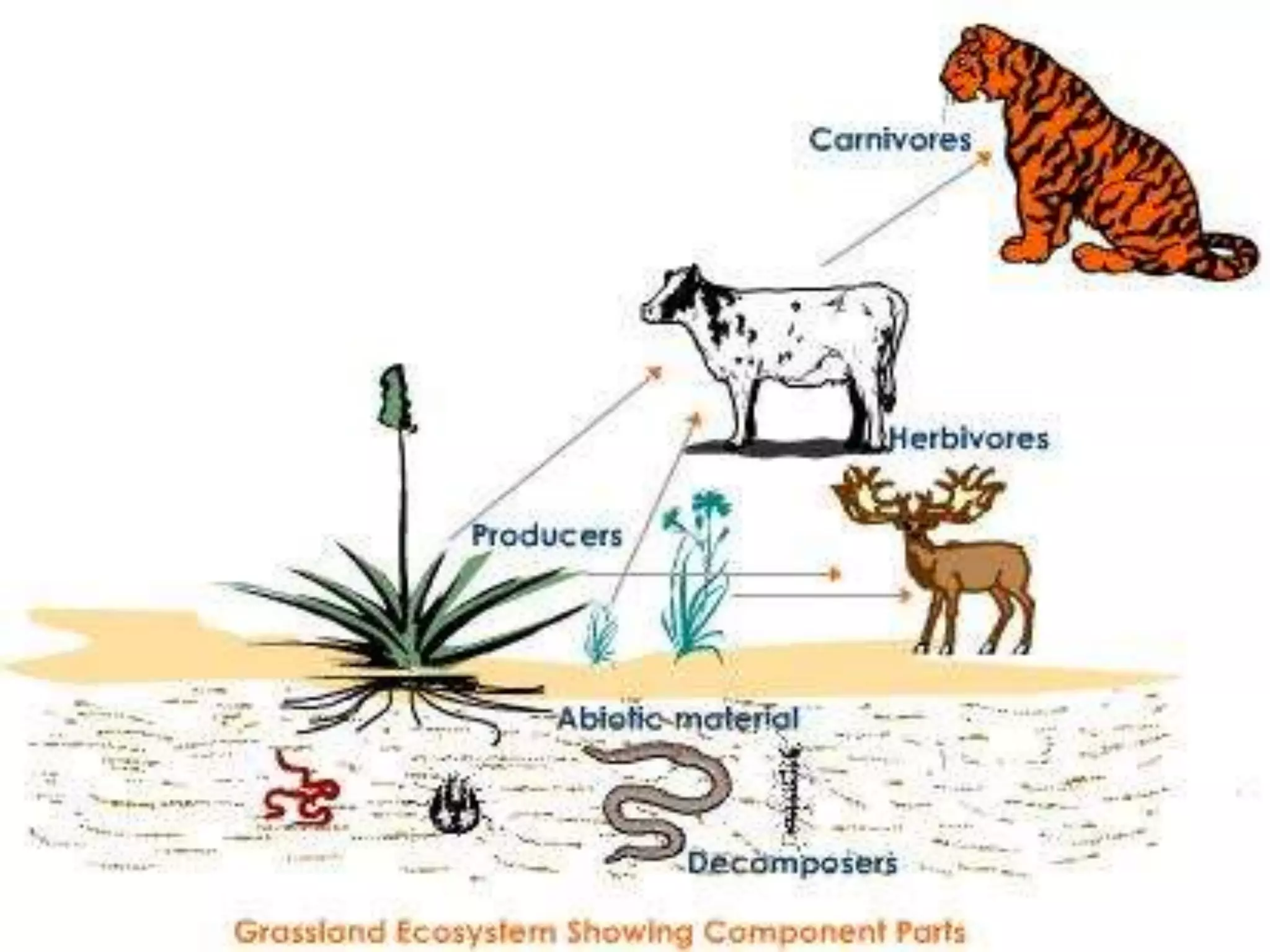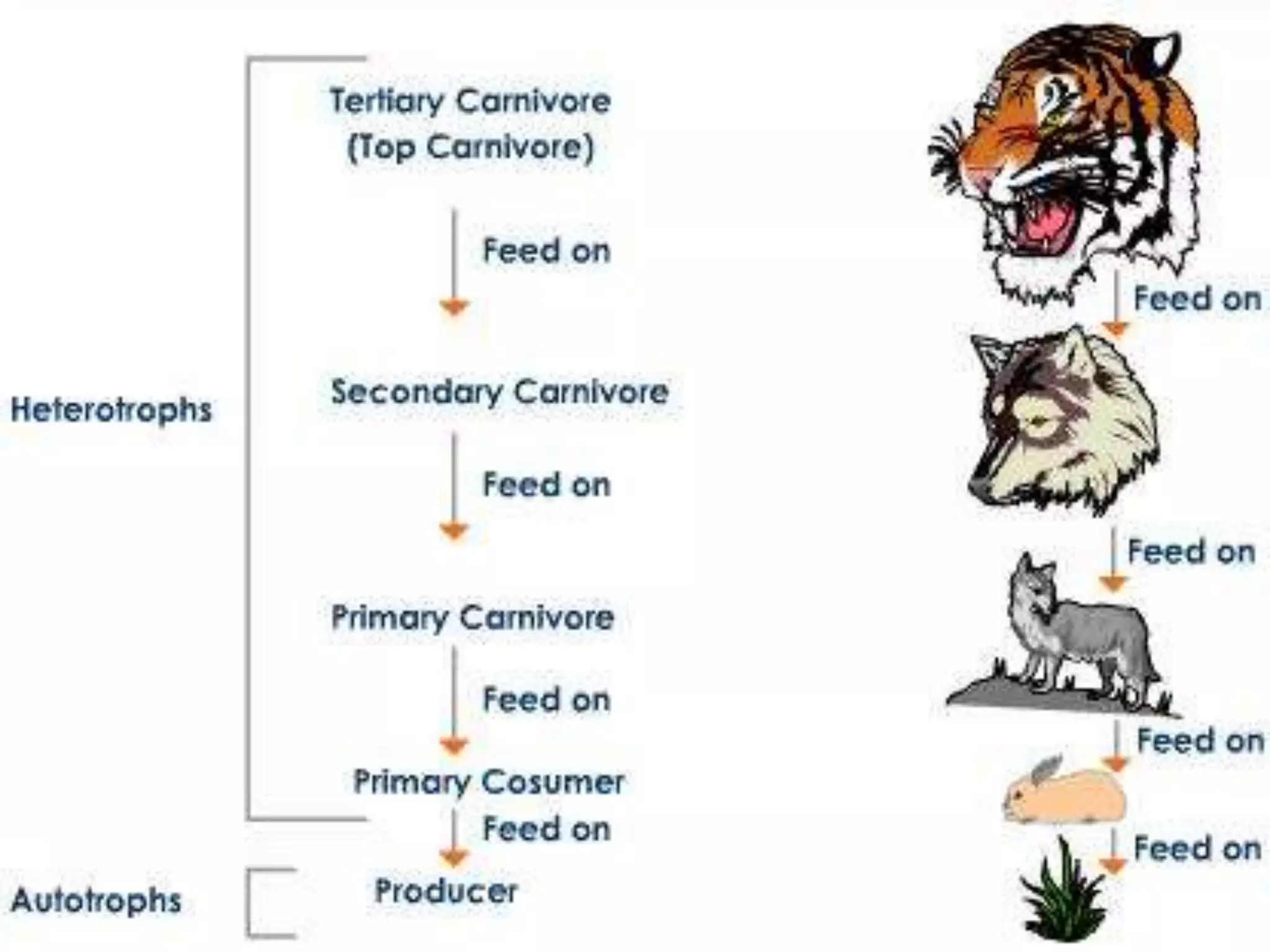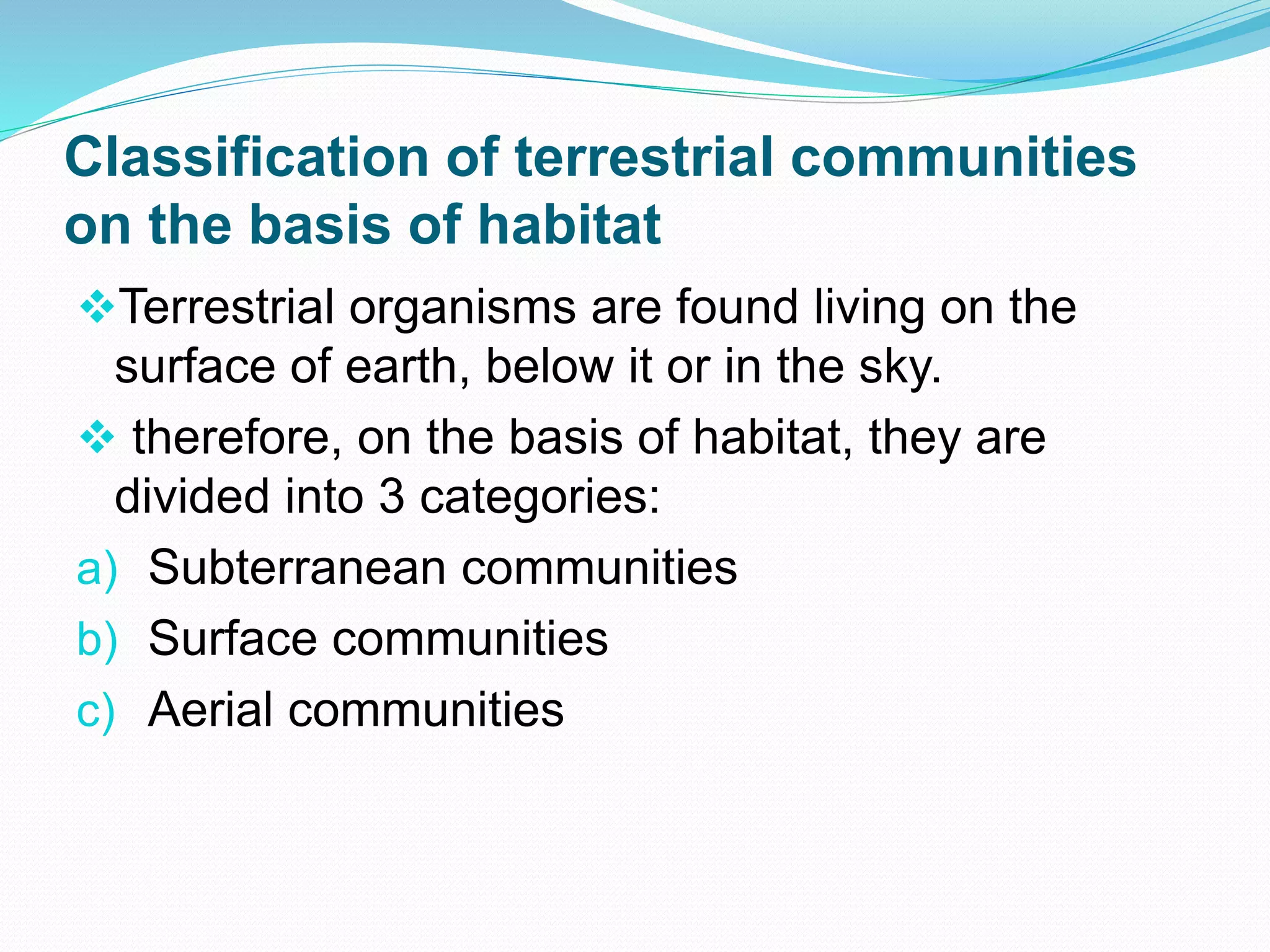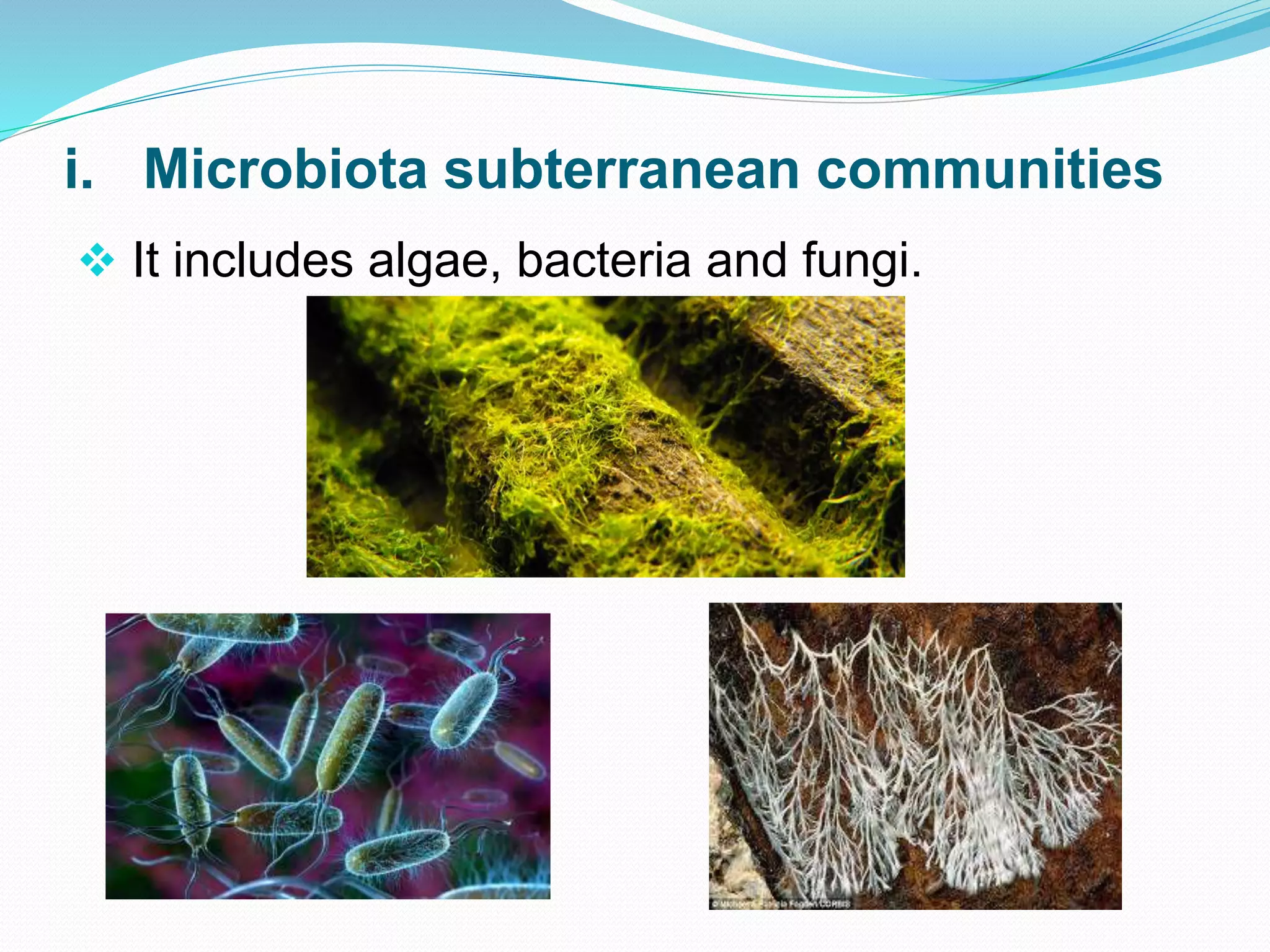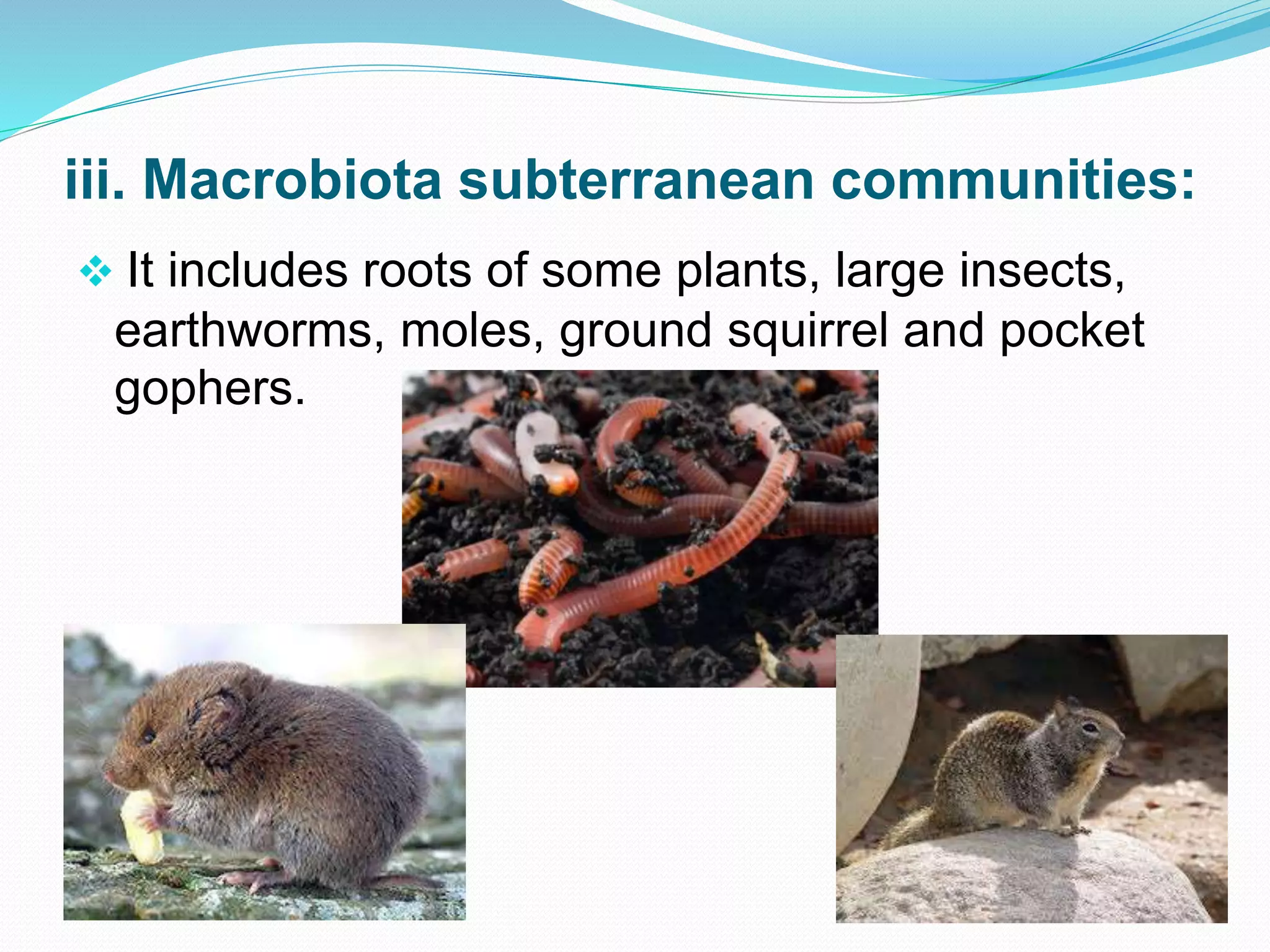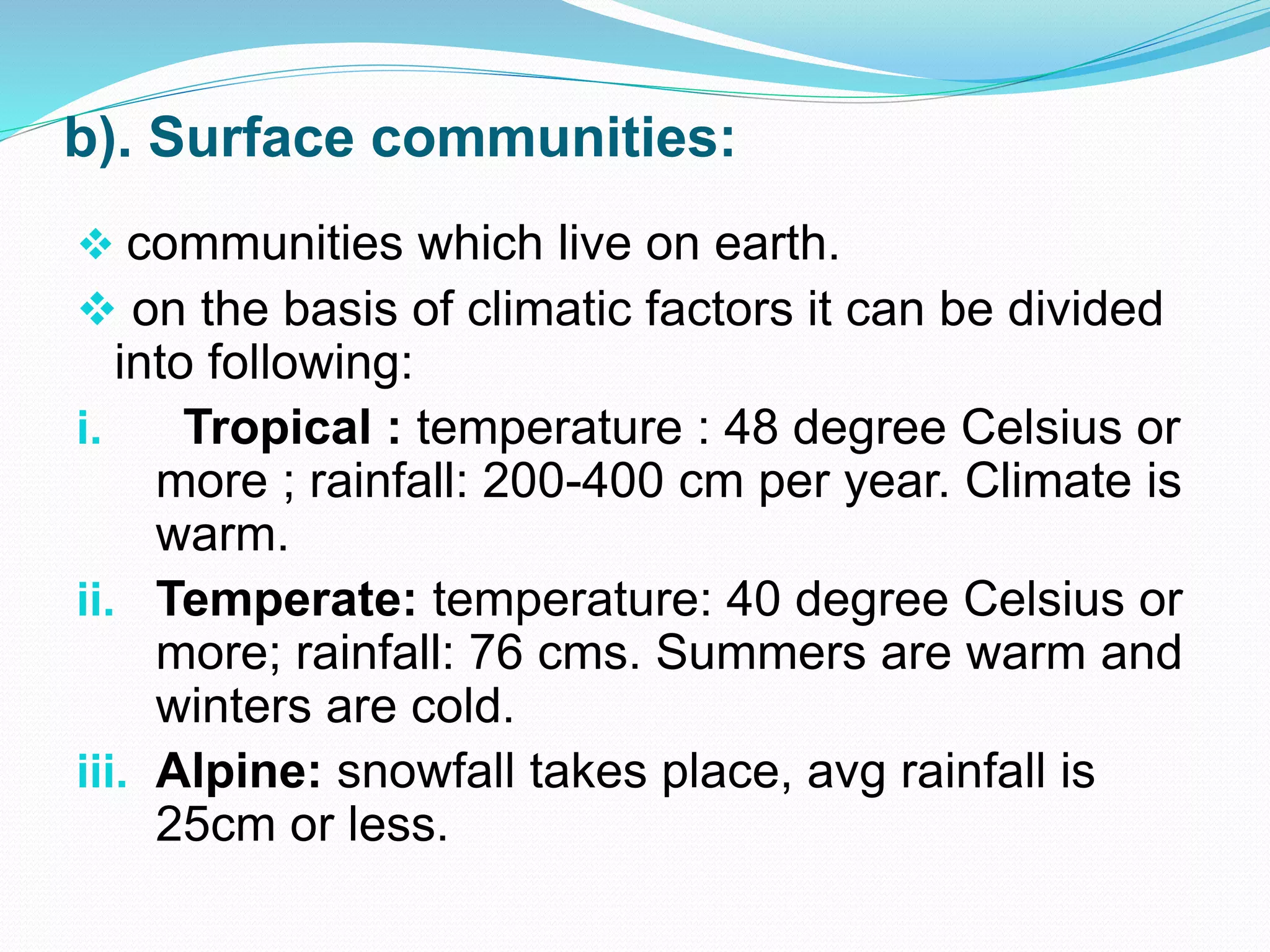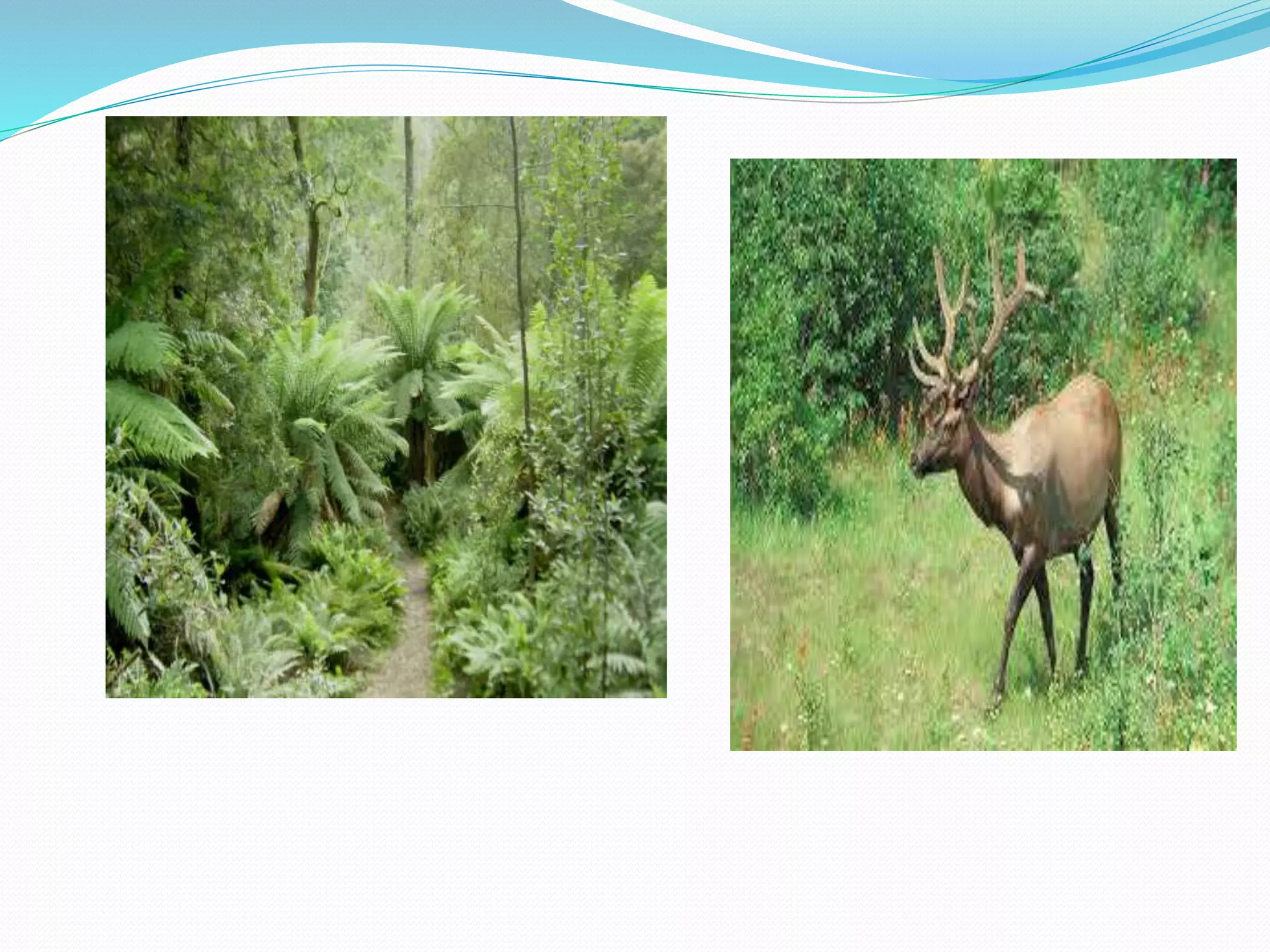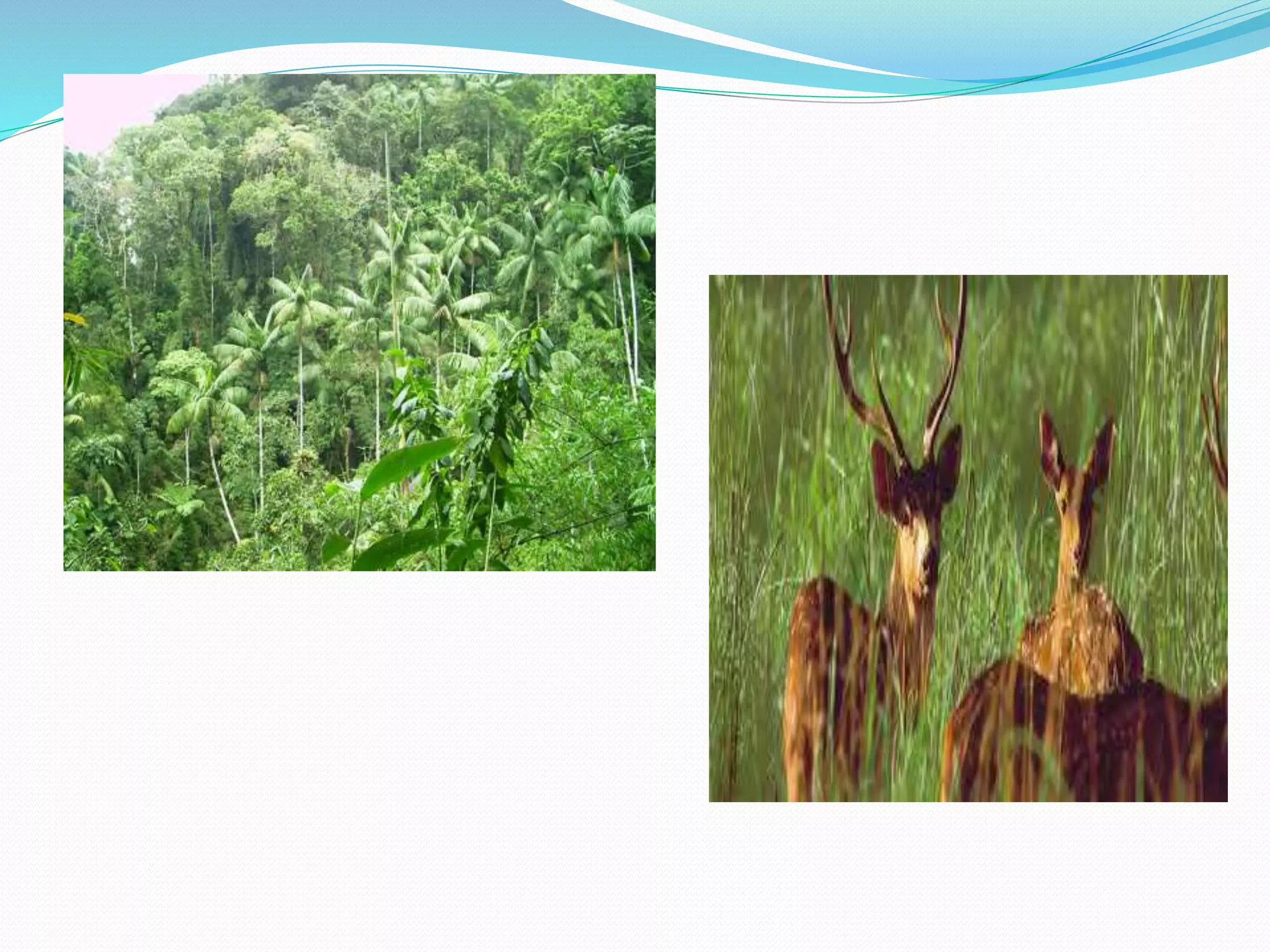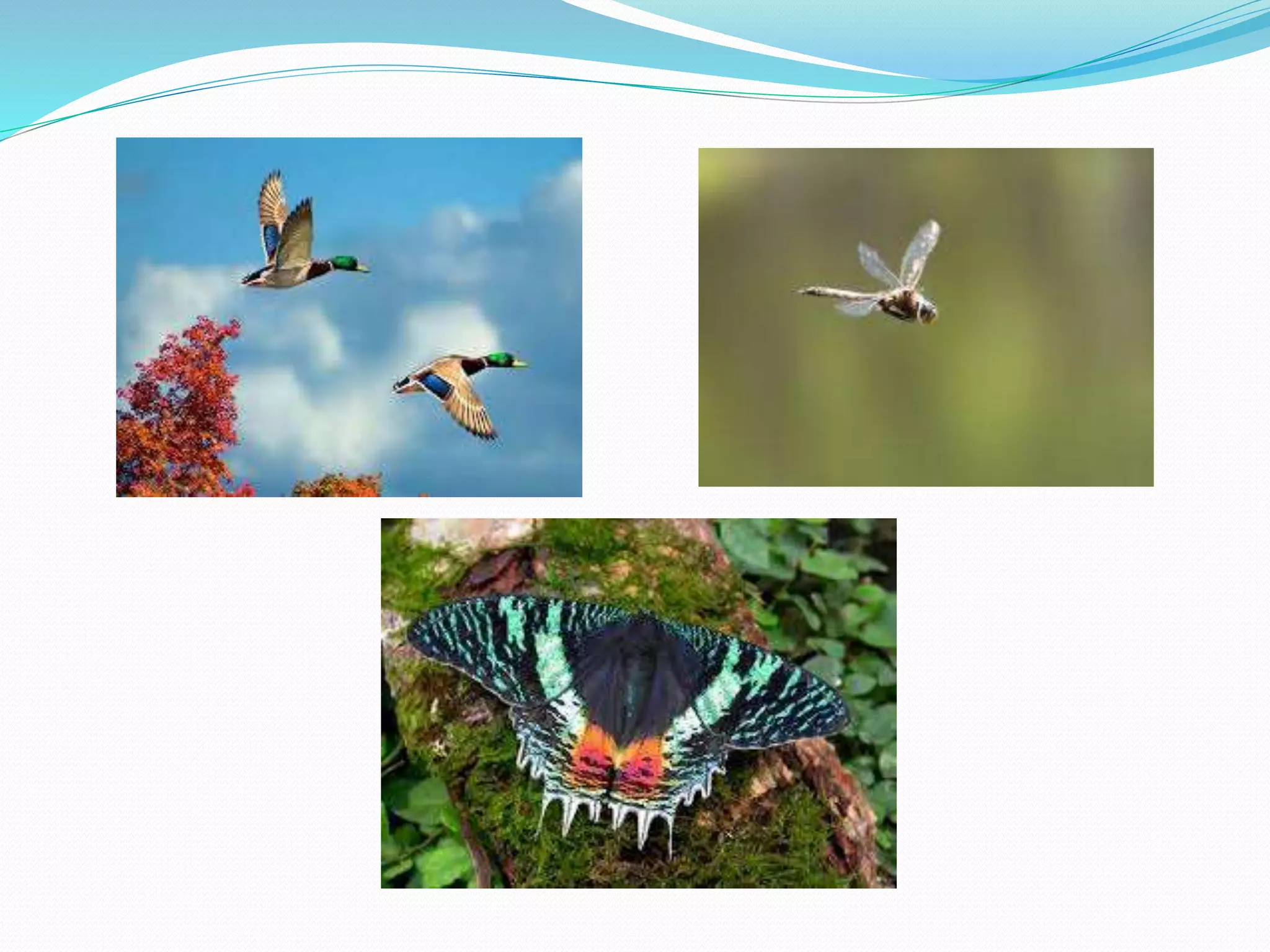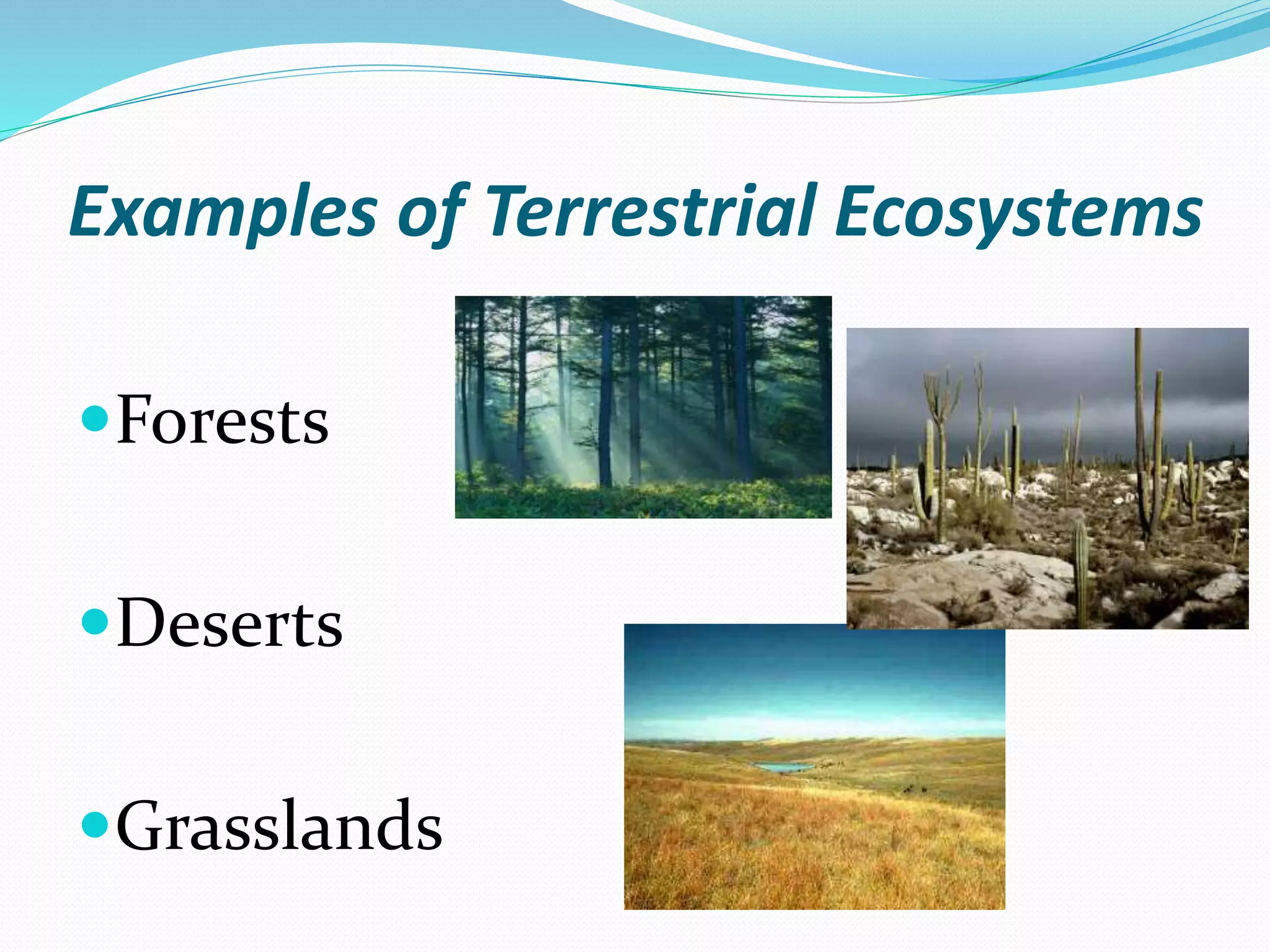Terrestrial ecosystems are ecosystems that exist on land, as opposed to aquatic ecosystems. They can vary greatly in size and include ecosystems like forests, grasslands, deserts, and tundra. Terrestrial ecosystems are characterized by greater temperature fluctuations, higher light availability, and more readily available gases than aquatic ecosystems. They contain a variety of plant life like flowering plants, conifers, and mosses, as well as many animal species including insects, birds, and mammals. Abiotic factors like temperature, sunlight, water, and wind all influence the living and non-living components of terrestrial ecosystems.
